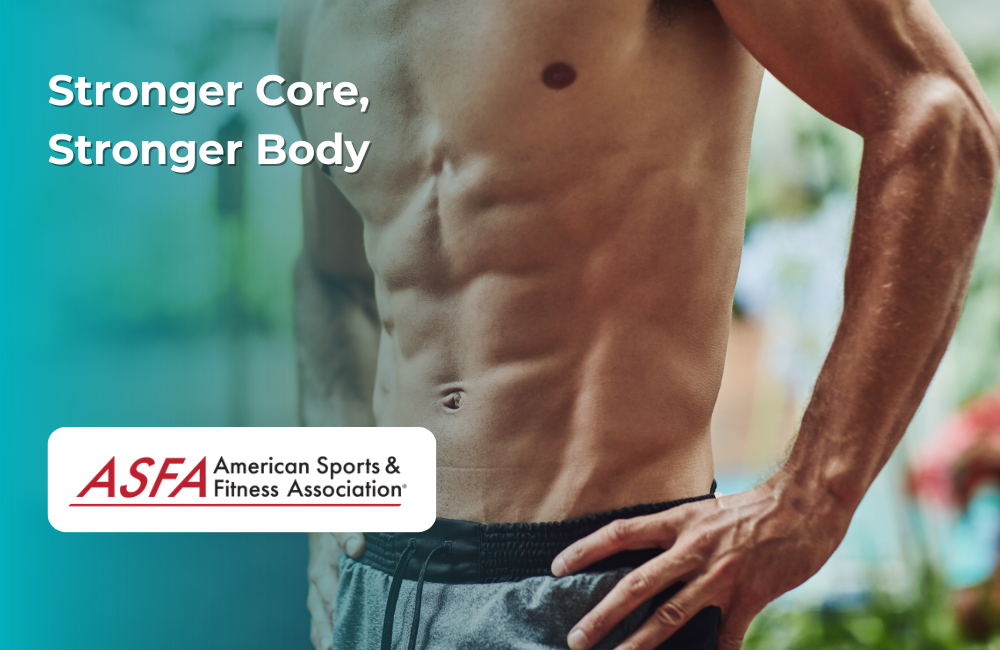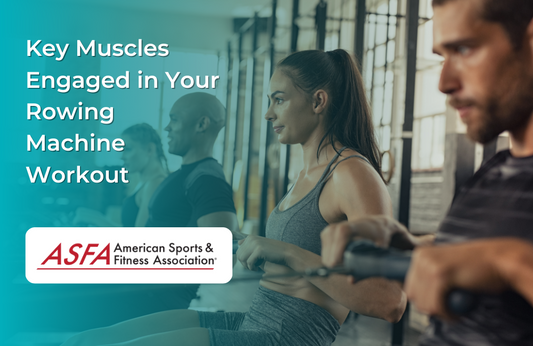A strong core is essential for overall health and fitness, as it supports your body in all of its daily movements. Whether you’re lifting groceries, climbing stairs, or simply sitting at a desk, your core muscles play a vital role in maintaining balance, stability, and posture. Focusing on functional fitness exercises that target the core can improve not only your physical strength but also your overall well-being, reducing pain, enhancing coordination, and boosting your energy for everyday activities.
In this article, we’ll explore various core strength exercises aimed at strengthening the core and the benefits of incorporating core training into your fitness routine.
Understanding the Core
The core is the central part of your body, encompassing the muscles of the abdomen, back, and pelvis. These core muscles include the rectus abdominis, obliques, and transverse abdominis, all of which work together to provide support and stability. A strong core is crucial for maintaining good posture, balance, and stability, which are essential for everyday activities, sports performance, and injury prevention. By focusing on strengthening your core muscles, you can enhance your overall physical health and well-being.
The Importance of Core Muscles
The core includes the muscles around your midsection—abs, obliques, lower back, hips, and pelvis—and these muscles are crucial for maintaining balance and stability. Core strength affects everything from posture to movement efficiency, and strengthening these muscles can significantly improve your quality of life. Strong core muscles facilitate a wide range of physical activities and are essential for overall performance and injury prevention.
Key Benefits of Core Strength:
-
Improved Posture: A strong core helps you maintain proper posture, reducing the strain on your spine and preventing slouching.
-
Enhanced Balance and Stability: Your core muscles support your body in maintaining balance, especially during dynamic movements like walking, running, or bending.
-
Reduced Back Pain: Strengthening the core can alleviate chronic lower back pain by providing more support for the spine and promoting better body mechanics.
-
Easier Daily Movements: With a stronger core, everyday activities such as bending, lifting, and twisting become easier and more efficient.
-
Increased Functional Fitness: Functional fitness refers to exercises that mimic real-life movements, helping you perform daily tasks more effectively. A strong core is essential for this.
Getting Started with Core Exercises
Before diving into a core exercise routine, it’s important to understand the basics of core training. Here are some tips to help you get started:
-
Start with Simple Exercises: Begin with basic exercises like planks, crunches, and leg raises. These foundational moves will help you build a solid base before progressing to more advanced exercises.
-
Engage Your Core: To properly engage your core, imagine pulling your belly button towards your spine. This will help you maintain a neutral position and ensure you’re targeting the correct muscles.
-
Use Proper Form: Always use proper form and technique when performing core exercises. This not only helps you avoid injury but also ensures you get the most out of your workout.
-
Start Slow: Begin with shorter sets and gradually increase the duration as you build endurance. This approach helps prevent overexertion and allows your muscles to adapt to the new routine.
Balance Ball Training for a Stronger Core
Another great piece of equipment for core strength is the balance ball (also known as a stability ball). This large, inflatable ball creates an unstable surface that forces your core to engage and maintain balance throughout your workout. Balance ball exercises not only target the abs but also strengthen the back, hips, and glutes.
Advantages of Balance Ball Core Training:
-
Versatile and Effective: Balance balls allow you to perform a wide variety of exercises that target different muscle groups, especially the core. Incorporating strength training with balance ball exercises can enhance overall fitness and core stability.
-
Support for Injuries or Disabilities: The soft, flexible surface of the balance ball provides support, making it a safer option for individuals recovering from injury or those with physical limitations.
-
Engages Deep Core Muscles: The instability of the ball requires the deep core muscles, including the transverse abdominis and multifidus, to work harder, improving overall strength and stability.
Core Exercises with a Balance Ball:
-
Planks on the Ball: Rest your forearms on the ball while holding a plank position, engaging the core to maintain balance.
-
Balance Ball Ab Rolls: Kneel on the floor with your hands on the ball, then slowly roll the ball forward, extending your body while keeping your core tight.
-
Back Extensions: Lie face down on the ball with your hips supported and lift your upper body, strengthening your lower back and core muscles.
Modifications for Individual Needs:
-
If you have specific fitness needs, such as recovering from an injury, balance ball exercises can be modified to suit your level. Working with a personal trainer can help ensure that you’re performing these exercises correctly and safely.
Pilates for Core Strength and Flexibility
Pilates is a popular fitness method that emphasizes core strength, stability, and flexibility. Pilates exercises are designed to strengthen the core while improving overall body alignment and muscle tone. One of the benefits of Pilates is that it can be adapted for all fitness levels and can be performed on a mat or using specialized Pilates equipment.
Benefits of Pilates for Core Strength:
-
Improved Flexibility: Pilates exercises stretch and lengthen the muscles, improving flexibility while building core strength.
-
Increased Balance and Stability: The focus on slow, controlled movements improves your balance and coordination.
-
Adaptable to All Levels: Whether performed on a mat or on a Pilates machine, these exercises can be modified to match your fitness level, making them accessible to everyone.
Pilates Core Exercises:
-
The Hundred: A foundational Pilates move that engages the entire core by pumping the arms while holding the legs off the ground.
-
Plank to Pike: Using a Pilates machine or a stability ball, move from a plank position into a pike, engaging the core and improving flexibility.
-
Single-Leg Stretch: Lying on your back, extend one leg while pulling the opposite knee toward your chest, engaging the abdominals throughout the movement. Emphasize the role of the right leg in maintaining balance and control during this exercise.
Core Exercises for Beginners
If you’re new to core training, here are some beginner-friendly exercises to get you started:
-
Plank: Hold a plank position for 30-60 seconds, rest for 30 seconds, and repeat for 3-5 sets. Ensure your body forms a straight line from head to heels, and engage your core throughout the exercise.
-
Crunches: Lie on your back with your knees bent and hands behind your head. Lift your shoulders off the ground, curling up towards your knees. Lower back down and repeat for 10-15 reps, 3-5 sets. Focus on using your abdominal muscles rather than your neck or shoulders.
-
Leg Raises: Lie on your back with your arms extended overhead and legs straight. Lift your legs off the ground, keeping them straight, and hold for 1-2 seconds. Lower your legs back down and repeat for 10-15 reps, 3-5 sets. Keep your lower back pressed into the floor to avoid strain.
Core Exercises for Everyday Life
Improving core strength goes beyond the gym—having a stronger core can significantly enhance your everyday life. Whether you’re lifting groceries, playing with your children, or maintaining good posture at your desk, a strong core makes daily movements easier and more efficient.
Key Everyday Benefits of a Strong Core:
-
Better Posture: Core exercises strengthen the muscles that support your spine, helping you maintain good posture, which reduces strain on your back and neck.
-
Reduced Lower Back Pain: Strengthening the core takes pressure off the lower back, helping to alleviate or prevent chronic pain.
-
Improved Functional Fitness: Daily tasks like bending, twisting, and lifting become easier with a strong core, as you have better balance and coordination. Proper engagement of both the right and left leg during these movements ensures stability and prevents injury.
Common Mistakes to Avoid
When performing core exercises, it’s important to avoid common mistakes that can hinder your progress or lead to injury:
-
Letting Your Back Arch: Maintain a neutral position and avoid letting your back arch, which can put strain on your lower back. Focus on keeping your spine aligned and your core engaged.
-
Not Engaging Your Core: Failing to engage your core can lead to poor form and ineffective exercises. Always remember to pull your belly button towards your spine to activate your core muscles.
-
Using Momentum: Avoid using momentum to lift weights or perform exercises, as this can put unnecessary strain on your muscles and joints. Perform each movement slowly and with control to maximize effectiveness.
-
Not Breathing Properly: Make sure to breathe properly and avoid holding your breath, which can lead to dizziness and lightheadedness. Inhale during the easier part of the exercise and exhale during the more challenging part.
By understanding the core, getting started with the right exercises, and avoiding common mistakes, you can effectively strengthen your core and enjoy the numerous benefits it brings to your overall health and fitness.
Ready to Help Others Achieve Core Strength? Become a Core Training Instructor!
If you’re passionate about fitness and want to help others achieve their goals, becoming a Core Fitness Instructor might be the perfect career path for you. As a Core Fitness Instructor, you’ll be able to teach others how to strengthen their core, improve their posture, and enhance their overall health through targeted core exercises.
Why Become a Core Fitness Instructor?
-
Help Others Improve Their Health: By focusing on core fitness, you’ll help clients achieve a stronger, more stable body that enhances their daily lives.
-
Flexible Career Options: With online certification courses, you can become certified at your own pace, making it easier to launch your fitness career.
-
In-Demand Specialization: Core strength is a critical component of overall fitness, making this specialization highly sought after by clients of all fitness levels. Teaching advanced exercises that involve the right arm, such as the Turkish Get-up, can significantly improve clients' balance and coordination.
Conclusion
Strengthening your core is the foundation of a healthier, more functional body. Whether you’re using equipment like the balance ball, or incorporating Pilates, there are countless ways to work on your core strength. A stronger core will improve your posture, balance, and stability while making daily activities easier and reducing the risk of back pain. By committing to core fitness, you’ll not only build a stronger body but also enhance your overall well-being.
Ready to take the next step in your fitness journey? Click below to learn more about becoming a Core Fitness Instructor and help others achieve their fitness goals today!





